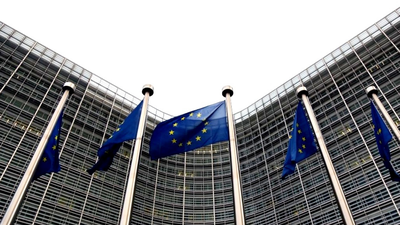ARTICLE AD BOX

KOLKATA: The European Commission’s proposal to buy carbon credits to help achieve EU’s 2040 climate target is a major boost for countries like India with rich agricultural and natural resource bases, which serve as carbon banks with immense potential, experts and analysts said.At a glance, this also looks mutually beneficial — countries like India will help developed nations achieve their environmental goals, and in return, they get additional funds for climate change mitigation. This would help increase demand for carbon credits as well.But it comes with a few riders — for India to benefit, the quality of the carbon credits it delivers is crucial. The idea is not just to remove carbon from the environment but to benefit the communities involved.
Higher the benefits from the projects, better the quality of the credits.
India will also have to make sure that the credits that are sold in the international market are not double counted for its domestic compliance.EU’s proposal is not entirely a novel concept, though. Earlier, under the Clean Development Mechanism (CDM) defined in the Kyoto Protocol, industrialised countries were allowed to purchase Certified Emission Reduction (CER) credits (a type of carbon credit) from emission reduction projects in developing countries to meet part of their emission reduction obligations.
“The system and expertise are very much there, with over 5,000 projects registered under CDM in India,” said Manish Kumar Shrivastava, senior fellow and associate director, earth science and climate change, TERI.But the CDM came with its own issues that led to its failure. The developed countries ended up claiming mitigation benefits for projects that were relatively cheaper, leaving the poorer developing countries to finance the more expensive and effective mitigation projects.At present, most projects registered under Indian schemes won’t automatically qualify for EU-aligned compliance markets, said Sapna Nijhawan, founder of Sustainiam, a firm working in the clean tech sector. “For us to qualify, we need to adopt internationally recognised baselines, ensure environmental and social integrity, and establish a transparent system for ‘corresponding adjustments’ under Article 6.2,” she said.And we are moving in that direction, said Manish Dabkara, chairman & MD of EKI Energy Services. “The govt's efforts through the carbon credit trading scheme (CCTS) and the Bureau of Energy Efficiency’s offset mechanism indicate a shift,” he said, while acknowledging the gaps in the system.But it might not be a smooth road ahead. Relying on the EU for demand for domestic carbon credits is risky, pointed out Krithika Ravishankar, senior analyst in the Climate, Environment and Sustainability sector at CSTEP.
“The EU had previously allowed international credits to be integrated into the EU Emissions Trading System (EUETS) but subsequently banned this allowance as it caused a significant price crash owing to an oversupply of credits, many of which were of subpar quality,” she said.The quality of the carbon credits will be paramount. “A high-quality credit isn’t just about carbon—it must deliver social and environmental co-benefits,” said a spokesperson from Verra, a non-profit that certifies carbon credits globally.Communities cannot be afterthoughts, Nijhawan said. India can draw on its experience with the Forest Rights Act, ensuring that carbon rights and benefit-sharing are clearly outlined, she said and added, “Projects should provide livelihood co-benefits, not just carbon offsets—this could mean agroforestry models, water conservation co-benefits, or women-led biomass enterprises.”Carbon credit frameworks in Peru, Kenya and Indonesia already include mandatory consultations, community representation in decision-making and legally binding revenue-sharing agreements.
“These models show that when local communities are included, carbon projects become more resilient, transparent and impactful," said Dabkara.Besides quality, the issue of double counting is a major problem. There needs to be a clear distinction between carbon credits for domestic compliance and those for international trade. The same credit should not be counted for India and then sold to the EU as well.This is where the need for a transparent national registry assumes importance.
“The whole purpose of a registry is to avoid double-counting and greenwashing,” said Srivastava. Once a carbon credit is geotagged and its carbon dioxide equivalent is registered, it can be ‘retired’ from the registry, according to marine scientist Abhijit Mitra. “But everyone needs to be very precise,” he said.While the climate sector evolves every day, awareness across the spectrum remains a major deficit. There is an urgent need for awareness across the spectrum. “There needs to be awareness about the voluntary market, cap-and-trade policies, existing Indian policies, green credits versus carbon credits, implementing agencies, who can be donors, who can be recipients, and the criteria,” said Mitra. If there is awareness, there is trust, and coupled with a proper mechanism, it can build a robust network that will benefit communities at the grassroots level as well.



.png)
.png)
.png)
















 2 hours ago
5
2 hours ago
5









 English (US) ·
English (US) ·